Suman Banerjee
Zoomer: Adaptive Image Focus Optimization for Black-box MLLM
Apr 30, 2025Abstract:Recent advancements in multimodal large language models (MLLMs) have broadened the scope of vision-language tasks, excelling in applications like image captioning and interactive question-answering. However, these models struggle with accurately processing visual data, particularly in tasks requiring precise object recognition and fine visual details. Stringent token limits often result in the omission of critical information, hampering performance. To address these limitations, we introduce \SysName, a novel visual prompting mechanism designed to enhance MLLM performance while preserving essential visual details within token limits. \SysName features three key innovations: a prompt-aware strategy that dynamically highlights relevant image regions, a spatial-preserving orchestration schema that maintains object integrity, and a budget-aware prompting method that balances global context with crucial visual details. Comprehensive evaluations across multiple datasets demonstrate that \SysName consistently outperforms baseline methods, achieving up to a $26.9\%$ improvement in accuracy while significantly reducing token consumption.
"Impressively Scary:" Exploring User Perceptions and Reactions to Unraveling Machine Learning Models in Social Media Applications
Mar 05, 2025Abstract:Machine learning models deployed locally on social media applications are used for features, such as face filters which read faces in-real time, and they expose sensitive attributes to the apps. However, the deployment of machine learning models, e.g., when, where, and how they are used, in social media applications is opaque to users. We aim to address this inconsistency and investigate how social media user perceptions and behaviors change once exposed to these models. We conducted user studies (N=21) and found that participants were unaware to both what the models output and when the models were used in Instagram and TikTok, two major social media platforms. In response to being exposed to the models' functionality, we observed long term behavior changes in 8 participants. Our analysis uncovers the challenges and opportunities in providing transparency for machine learning models that interact with local user data.
AGrail: A Lifelong Agent Guardrail with Effective and Adaptive Safety Detection
Feb 18, 2025Abstract:The rapid advancements in Large Language Models (LLMs) have enabled their deployment as autonomous agents for handling complex tasks in dynamic environments. These LLMs demonstrate strong problem-solving capabilities and adaptability to multifaceted scenarios. However, their use as agents also introduces significant risks, including task-specific risks, which are identified by the agent administrator based on the specific task requirements and constraints, and systemic risks, which stem from vulnerabilities in their design or interactions, potentially compromising confidentiality, integrity, or availability (CIA) of information and triggering security risks. Existing defense agencies fail to adaptively and effectively mitigate these risks. In this paper, we propose AGrail, a lifelong agent guardrail to enhance LLM agent safety, which features adaptive safety check generation, effective safety check optimization, and tool compatibility and flexibility. Extensive experiments demonstrate that AGrail not only achieves strong performance against task-specific and system risks but also exhibits transferability across different LLM agents' tasks.
VoLUT: Efficient Volumetric streaming enhanced by LUT-based super-resolution
Feb 17, 2025Abstract:3D volumetric video provides immersive experience and is gaining traction in digital media. Despite its rising popularity, the streaming of volumetric video content poses significant challenges due to the high data bandwidth requirement. A natural approach to mitigate the bandwidth issue is to reduce the volumetric video's data rate by downsampling the content prior to transmission. The video can then be upsampled at the receiver's end using a super-resolution (SR) algorithm to reconstruct the high-resolution details. While super-resolution techniques have been extensively explored and advanced for 2D video content, there is limited work on SR algorithms tailored for volumetric videos. To address this gap and the growing need for efficient volumetric video streaming, we have developed VoLUT with a new SR algorithm specifically designed for volumetric content. Our algorithm uniquely harnesses the power of lookup tables (LUTs) to facilitate the efficient and accurate upscaling of low-resolution volumetric data. The use of LUTs enables our algorithm to quickly reference precomputed high-resolution values, thereby significantly reducing the computational complexity and time required for upscaling. We further apply adaptive video bit rate algorithm (ABR) to dynamically determine the downsampling rate according to the network condition and stream the selected video rate to the receiver. Compared to related work, VoLUT is the first to enable high-quality 3D SR on commodity mobile devices at line-rate. Our evaluation shows VoLUT can reduce bandwidth usage by 70% , boost QoE by 36.7% for volumetric video streaming and achieve 3D SR speed-up with no quality compromise.
PalmBench: A Comprehensive Benchmark of Compressed Large Language Models on Mobile Platforms
Oct 05, 2024



Abstract:Deploying large language models (LLMs) locally on mobile devices is advantageous in scenarios where transmitting data to remote cloud servers is either undesirable due to privacy concerns or impractical due to network connection. Recent advancements (MLC, 2023a; Gerganov, 2023) have facilitated the local deployment of LLMs. However, local deployment also presents challenges, particularly in balancing quality (generative performance), latency, and throughput within the hardware constraints of mobile devices. In this paper, we introduce our lightweight, all-in-one automated benchmarking framework that allows users to evaluate LLMs on mobile devices. We provide a comprehensive benchmark of various popular LLMs with different quantization configurations (both weights and activations) across multiple mobile platforms with varying hardware capabilities. Unlike traditional benchmarks that assess full-scale models on high-end GPU clusters, we focus on evaluating resource efficiency (memory and power consumption) and harmful output for compressed models on mobile devices. Our key observations include i) differences in energy efficiency and throughput across mobile platforms; ii) the impact of quantization on memory usage, GPU execution time, and power consumption; and iii) accuracy and performance degradation of quantized models compared to their non-quantized counterparts; and iv) the frequency of hallucinations and toxic content generated by compressed LLMs on mobile devices.
SwinGS: Sliding Window Gaussian Splatting for Volumetric Video Streaming with Arbitrary Length
Sep 12, 2024

Abstract:Recent advances in 3D Gaussian Splatting (3DGS) have garnered significant attention in computer vision and computer graphics due to its high rendering speed and remarkable quality. While extant research has endeavored to extend the application of 3DGS from static to dynamic scenes, such efforts have been consistently impeded by excessive model sizes, constraints on video duration, and content deviation. These limitations significantly compromise the streamability of dynamic 3D Gaussian models, thereby restricting their utility in downstream applications, including volumetric video, autonomous vehicle, and immersive technologies such as virtual, augmented, and mixed reality. This paper introduces SwinGS, a novel framework for training, delivering, and rendering volumetric video in a real-time streaming fashion. To address the aforementioned challenges and enhance streamability, SwinGS integrates spacetime Gaussian with Markov Chain Monte Carlo (MCMC) to adapt the model to fit various 3D scenes across frames, in the meantime employing a sliding window captures Gaussian snapshots for each frame in an accumulative way. We implement a prototype of SwinGS and demonstrate its streamability across various datasets and scenes. Additionally, we develop an interactive WebGL viewer enabling real-time volumetric video playback on most devices with modern browsers, including smartphones and tablets. Experimental results show that SwinGS reduces transmission costs by 83.6% compared to previous work with ignorable compromise in PSNR. Moreover, SwinGS easily scales to long video sequences without compromising quality.
An Effective Tag Assignment Approach for Billboard Advertisement
Sep 04, 2024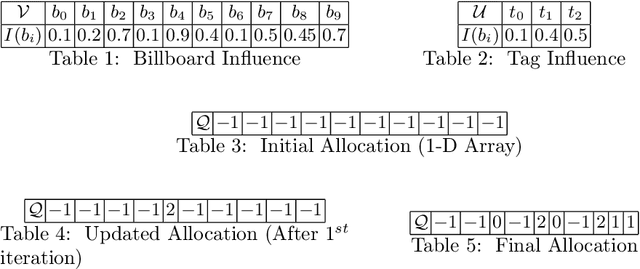
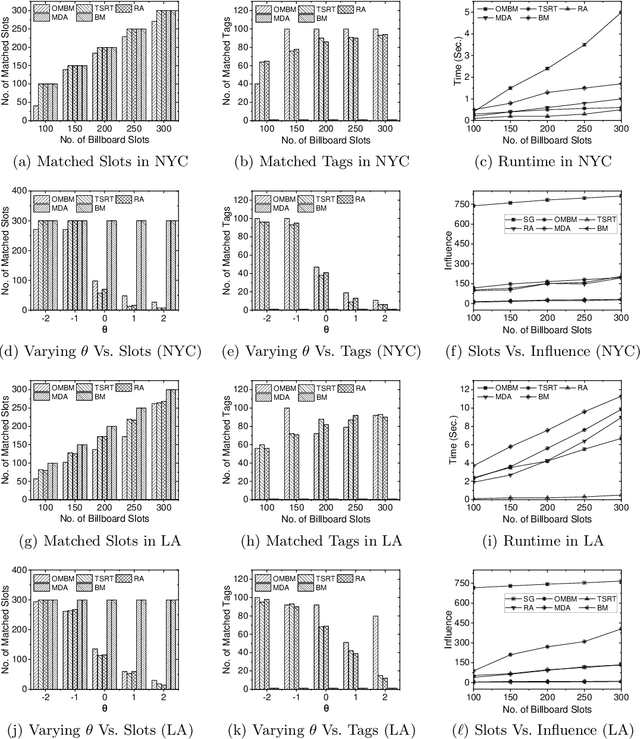
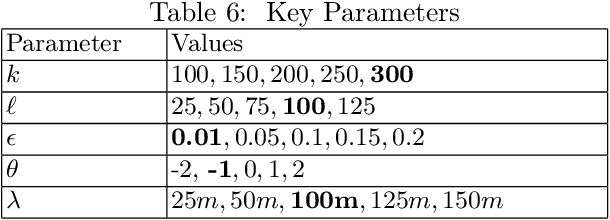
Abstract:Billboard Advertisement has gained popularity due to its significant outrage in return on investment. To make this advertisement approach more effective, the relevant information about the product needs to be reached to the relevant set of people. This can be achieved if the relevant set of tags can be mapped to the correct slots. Formally, we call this problem the Tag Assignment Problem in Billboard Advertisement. Given trajectory, billboard database, and a set of selected billboard slots and tags, this problem asks to output a mapping of selected tags to the selected slots so that the influence is maximized. We model this as a variant of traditional bipartite matching called One-To-Many Bipartite Matching (OMBM). Unlike traditional bipartite matching, a tag can be assigned to only one slot; in the OMBM, a tag can be assigned to multiple slots while the vice versa can not happen. We propose an iterative solution approach that incrementally allocates the tags to the slots. The proposed methodology has been explained with an illustrated example. A complexity analysis of the proposed solution approach has also been conducted. The experimental results on real-world trajectory and billboard datasets prove our claim on the effectiveness and efficiency of the proposed solution.
Buffer-based Gradient Projection for Continual Federated Learning
Sep 03, 2024Abstract:Continual Federated Learning (CFL) is essential for enabling real-world applications where multiple decentralized clients adaptively learn from continuous data streams. A significant challenge in CFL is mitigating catastrophic forgetting, where models lose previously acquired knowledge when learning new information. Existing approaches often face difficulties due to the constraints of device storage capacities and the heterogeneous nature of data distributions among clients. While some CFL algorithms have addressed these challenges, they frequently rely on unrealistic assumptions about the availability of task boundaries (i.e., knowing when new tasks begin). To address these limitations, we introduce Fed-A-GEM, a federated adaptation of the A-GEM method (Chaudhry et al., 2019), which employs a buffer-based gradient projection approach. Fed-A-GEM alleviates catastrophic forgetting by leveraging local buffer samples and aggregated buffer gradients, thus preserving knowledge across multiple clients. Our method is combined with existing CFL techniques, enhancing their performance in the CFL context. Our experiments on standard benchmarks show consistent performance improvements across diverse scenarios. For example, in a task-incremental learning scenario using the CIFAR-100 dataset, our method can increase the accuracy by up to 27%. Our code is available at https://github.com/shenghongdai/Fed-A-GEM.
Advancing Multi-Modal Sensing Through Expandable Modality Alignment
Jul 25, 2024Abstract:Sensing technology is widely used for comprehending the physical world, with numerous modalities explored in past decades. While there has been considerable work on multi-modality learning, they all require data of all modalities be paired. How to leverage multi-modality data with partially pairings remains an open problem. To tackle this challenge, we introduce the Babel framework, encompassing the neural network architecture, data preparation and processing, as well as the training strategies. Babel serves as a scalable pre-trained multi-modal sensing neural network, currently aligning six sensing modalities, namely Wi-Fi, mmWave, IMU, LiDAR, video, and depth. To overcome the scarcity of complete paired data, the key idea of Babel involves transforming the N-modality alignment into a series of two-modality alignments by devising the expandable network architecture. This concept is also realized via a series of novel techniques, including the pre-trained modality tower that capitalizes on available single-modal networks, and the adaptive training strategy balancing the contribution of the newly incorporated modality with the previously established modality alignment. Evaluation demonstrates Babel's outstanding performance on eight human activity recognition datasets, compared to various baselines e.g., the top multi-modal sensing framework, single-modal sensing networks, and multi-modal large language models. Babel not only effectively fuses multiple available modalities (up to 22% accuracy increase), but also enhance the performance of individual modality (12% averaged accuracy improvement). Case studies also highlight exciting application scenarios empowered by Babel, including cross-modality retrieval (i.e., sensing imaging), and bridging LLM for sensing comprehension.
Gemini: Integrating Full-fledged Sensing upon Millimeter Wave Communications
Jul 04, 2024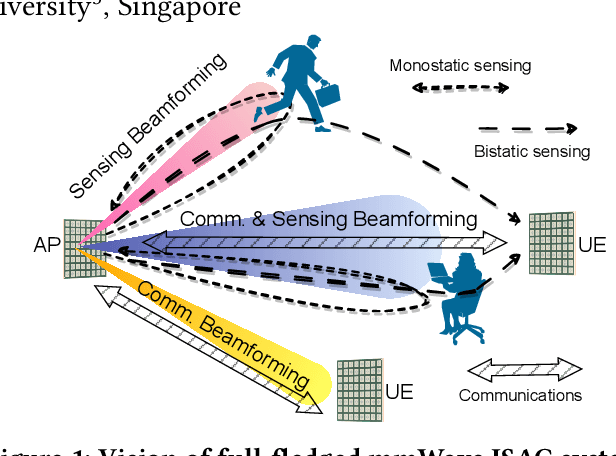
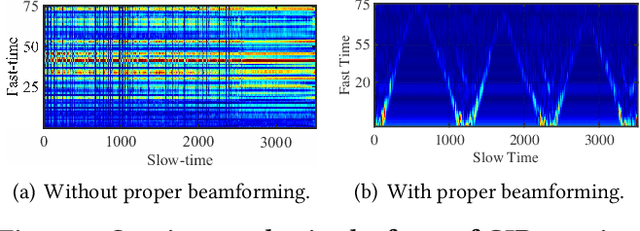
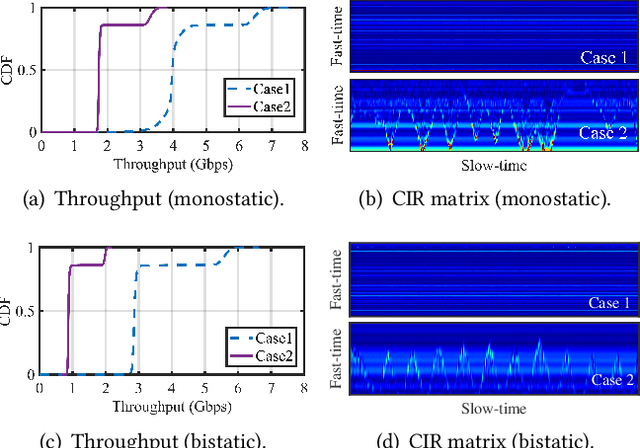
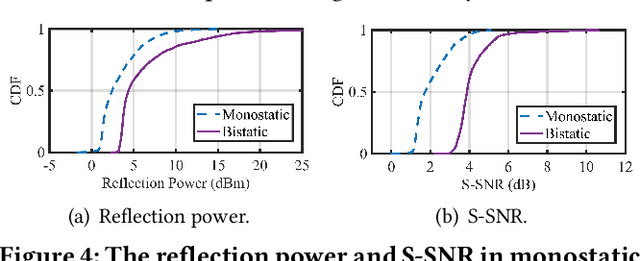
Abstract:Integrating millimeter wave (mmWave)technology in both communication and sensing is promising as it enables the reuse of existing spectrum and infrastructure without draining resources. Most existing systems piggyback sensing onto conventional communication modes without fully exploiting the potential of integrated sensing and communication (ISAC) in mmWave radios (not full-fledged). In this paper, we design and implement a full-fledged mmWave ISAC system Gemini; it delivers raw channel states to serve a broad category of sensing applications. We first propose the mmWave self-interference cancellation approach to extract the weak reflected signals for near-field sensing purposes. Then, we develop a joint optimization scheduling framework that can be utilized in accurate radar sensing while maximizing the communication throughput. Finally, we design a united fusion sensing algorithm to offer a better sensing performance via combining monostatic and bistatic modes. We evaluate our system in extensive experiments to demonstrate Gemini's capability of simultaneously operating sensing and communication, enabling mmWave ISAC to perform better than the commercial off-the-shelf mmWave radar for 5G cellular networks.
 Add to Chrome
Add to Chrome Add to Firefox
Add to Firefox Add to Edge
Add to Edge